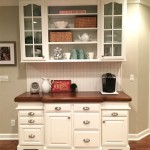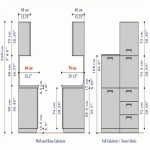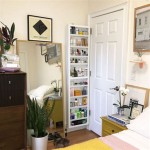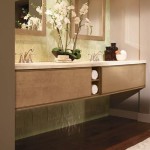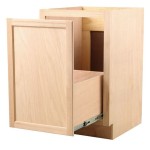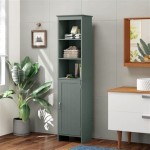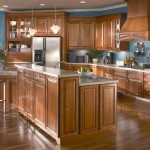Designing The Perfect Bathroom Vanity With Side Cabinet Design
The bathroom vanity serves as a focal point and a practical element within the bathroom space. Effective bathroom design incorporates both aesthetics and functionality, and the vanity often becomes the central hub for daily routines. Integrating a side cabinet design into the vanity setup enhances storage capabilities and contributes to an organized and visually appealing bathroom environment. This article explores the key considerations and design principles involved in creating the perfect bathroom vanity with an integrated side cabinet.
Understanding Space Constraints and User Needs
Before embarking on the design process, it is critical to analyze the available space within the bathroom. Measure the length, width, and height of the designated vanity area. Note any existing architectural features, such as windows, doors, or plumbing fixtures, that may impact the vanity's placement and dimensions. Accurate measurements ensure that the chosen vanity and side cabinet design will fit seamlessly into the bathroom without obstructing movement or access to other essential elements.
Furthermore, it's crucial to assess the storage needs of the individuals who will be using the bathroom. Consider the number of people sharing the space, the types of items that need to be stored (e.g., toiletries, towels, cleaning supplies), and the preferred organization methods. Analyzing user needs guides the selection of appropriate cabinet sizes, drawer configurations, and shelving options within both the main vanity and the side cabinet. A well-planned vanity design caters to individual requirements, promoting efficiency and minimizing clutter.
The overall style of the bathroom should also be considered. A modern bathroom might call for sleek, minimalist cabinetry, while a traditional bathroom might suit a more ornate design with raised panel doors and decorative hardware. The chosen style will influence the materials, finishes, and hardware selected for the vanity and side cabinet.
Selecting Materials and Finishes
The choice of materials significantly impacts the durability, aesthetics, and maintenance requirements of the bathroom vanity and side cabinet. Common materials for vanity construction include solid wood, plywood, MDF (Medium-Density Fiberboard), and various engineered wood products. Solid wood offers robustness and a natural aesthetic but can be more susceptible to moisture damage if not properly sealed. Plywood and MDF are more dimensionally stable and resistant to warping, making them suitable options for bathroom environments.
The countertop material is another crucial consideration. Popular choices include granite, quartz, marble, solid surface materials, and laminate. Granite and quartz offer durability and resistance to stains and scratches, while marble provides a luxurious appearance but requires more careful maintenance. Solid surface materials are non-porous and easy to clean, while laminate offers an affordable and versatile option.
Finishes play a vital role in the overall aesthetic and protection of the vanity and side cabinet. Paint, stain, and lacquer are common finishing options. Paint provides a wide range of color choices and can be easily updated, while stain enhances the natural grain of the wood. Lacquer offers a durable and water-resistant finish, ideal for bathroom environments. The chosen finish should complement the overall bathroom design and provide adequate protection against moisture and everyday wear and tear.
Hardware, such as knobs, pulls, and hinges, adds a finishing touch to the vanity and side cabinet. Select hardware that complements the chosen style and finish, and ensure that it is durable and easy to use. Consider the functionality of the hardware, such as soft-close hinges and drawer slides, to enhance the user experience.
Optimizing Storage and Functionality with Side Cabinets
The primary advantage of incorporating a side cabinet into the bathroom vanity design is the enhanced storage capacity. Side cabinets offer additional space for storing toiletries, towels, cleaning supplies, and other bathroom essentials. Strategic planning of the cabinet's interior configuration is essential to maximize its functionality.
Consider incorporating a combination of shelves, drawers, and adjustable dividers within the side cabinet. Shelves provide versatile storage for larger items, while drawers are ideal for organizing smaller items and preventing clutter. Adjustable dividers allow for customization of the storage space to accommodate specific needs. Consider incorporating pull-out shelves for easy access to items stored at the back of the cabinet.
The positioning of the side cabinet relative to the main vanity is also crucial. It can be placed on either side of the vanity, depending on the available space and the desired aesthetic. Consider the flow of movement within the bathroom and ensure that the side cabinet does not obstruct access to other essential elements, such as the toilet or shower. A well-positioned side cabinet complements the vanity and enhances the overall functionality of the bathroom.
Consider incorporating specialized storage solutions within the side cabinet, such as a built-in hamper for laundry, a pull-out organizer for hair styling tools, or a medicine cabinet with adjustable shelves. These specialized storage solutions can help to declutter the bathroom and streamline daily routines. A built-in power outlet within the side cabinet can also be a convenient addition for charging electronic devices.
Lighting is another important consideration. Integrate lighting within the side cabinet to illuminate the contents and enhance visibility. Consider LED strip lighting or recessed lighting to provide a warm and inviting glow. The lighting should be coordinated with the overall bathroom lighting scheme to create a cohesive and visually appealing environment.
A less common, but potentially useful feature, is incorporating a pull-out stool or step stool into the side cabinet design. This is particularly beneficial for families with young children or individuals who have difficulty reaching higher shelves. The stool can be concealed within the cabinet when not in use, maximizing space and minimizing clutter.
Ensuring Proper Plumbing and Electrical Considerations
When designing a bathroom vanity with a side cabinet, careful attention must be paid to plumbing and electrical considerations. Ensure that the vanity and side cabinet are positioned in a way that does not obstruct access to existing plumbing lines. If necessary, consult with a qualified plumber to relocate or modify plumbing lines to accommodate the new vanity design.
Similarly, ensure that electrical outlets are strategically placed near the vanity for powering appliances such as hair dryers, electric shavers, and curling irons. Consider incorporating GFCI (Ground Fault Circuit Interrupter) outlets to protect against electrical shock in wet environments. If installing lighting within the side cabinet, ensure that the wiring is properly installed and grounded according to local electrical codes.
It is crucial to consult with qualified professionals, such as plumbers and electricians, to ensure that all plumbing and electrical work is performed safely and in compliance with applicable codes. Improperly installed plumbing or electrical wiring can pose serious safety hazards. Prioritize safety and compliance throughout the design and installation process.
Selecting Appropriate Styles and Aesthetics
The style of the bathroom vanity and side cabinet should align with the overall aesthetic of the bathroom. Consider the existing architectural features, color palette, and décor when selecting the style of the vanity. Common bathroom vanity styles include modern, traditional, transitional, farmhouse, and minimalist.
Modern bathroom vanities often feature clean lines, minimalist designs, and sleek hardware. They may incorporate materials such as glass, metal, and engineered wood. Traditional bathroom vanities typically feature ornate details, raised panel doors, and decorative hardware. They may incorporate materials such as solid wood, marble, and granite.
Transitional bathroom vanities blend elements of modern and traditional styles, creating a timeless and versatile look. They may feature simple lines, understated hardware, and neutral color palettes. Farmhouse bathroom vanities evoke a rustic and charming aesthetic. They may incorporate materials such as reclaimed wood, shiplap, and vintage-inspired hardware.
Minimalist bathroom vanities prioritize simplicity and functionality. They feature clean lines, minimal ornamentation, and ample storage space. They may incorporate materials such as solid wood, plywood, and MDF with a white or neutral finish. The color palette should complement the overall bathroom design and create a cohesive and visually appealing environment.
Consider incorporating decorative elements, such as mirrors, artwork, and plants, to enhance the aesthetic appeal of the vanity area. A well-placed mirror can create the illusion of more space and reflect light throughout the bathroom. Artwork and plants can add pops of color and personality to the vanity area. The goal is to create a functional and aesthetically pleasing space that reflects individual style and preferences.
Ultimately, designing the perfect bathroom vanity with side cabinet design requires careful planning, attention to detail, and a thorough understanding of user needs, space constraints, and available materials. By considering the key principles outlined in this article, it becomes possible to create a functional, aesthetically pleasing, and well-organized bathroom space.

A Step By Guide To Designing Your Bathroom Vanity

30 Designer Bathroom Cabinet Ideas For A Spa Like Space

30 Designer Bathroom Cabinet Ideas For A Spa Like Space

Custom Bathroom Vanity Ideas Cabinet Design Inspiration Gallery

Bathroom Vanity Ideas 39 Gorgeous Options To Inspire Your Next Makeover Architectural Digest

Bathroom Vanity And Sink Ideas Tips From An Expert Seattle Remodeler Model Remodel

Corner Bathroom Vanity Ideas 18 Designs For Any Space Decoist

25 Bathrooms With Built In Makeup Vanities

Bathroom Vanity Ideas 39 Gorgeous Options To Inspire Your Next Makeover Architectural Digest

40 Bathroom Vanities You Ll Love For Every Style
Related Posts

